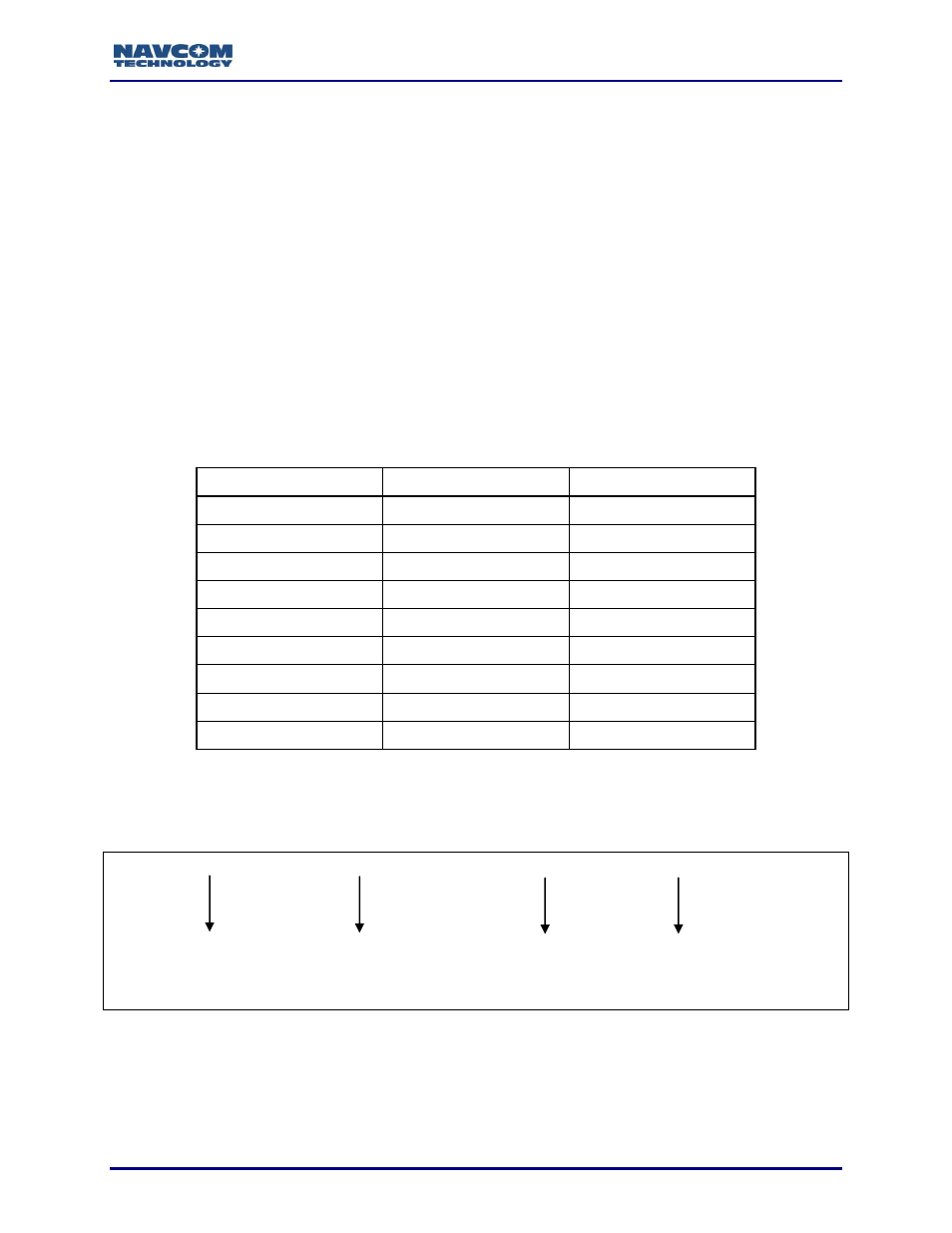Binary output message organization, Table 5: data type abbreviations – NavCom Sapphire Rev.J User Manual
Page 39

Sapphire Technical Reference Manual Rev. J
39
Sapphire output messages are ASCII or binary. Not all binary output messages have an ASCII
equivalent and vice versa.
Both ASCII and binary Sapphire output messages share these format elements in common:
Both begin with a unique, identifying ASCII mnemonic enclosed in square brackets.
The last letter of the mnemonic is the character ‘A’ for ASCII records or ‘B’ for binary
records.
Both are terminated with a CRC and a new line sequence (
line feed). The CRC has a format identical to the optional CRC used for ASCII input
messages, i.e., four hex-ASCII characters preceded by an asterisk (*CRC).
Binary Output Message Organization
Sapphire binary output messages use C-language structure definitions to describe the details of
their formats. Table 5 lists the data type abbreviations used.
Table 5: Data Type Abbreviations
Data Type
# of bytes
C-Language Definition
U08
1
unsigned char
S08
1
signed char
Bool
1
unsigned char
U16
2
unsigned short
S16
2
signed short
U32
4
unsigned long
S32
4
signed long
R32
4
float
R64
8
double
Table 6 shows the general format of Sapphire binary output messages.
Table 6: General Format of Sapphire Binary Output Messages
[mnemonic]
…… binary header …… binary message body …… *CRC
Unique record identifier.
ASCII ending in ‘B’
enclosed in brackets
Standard binary header
described in Table 7, or
simplified binary header
described in Table 9.
Binary message body
unique for each record
identifier.
CRC followed by
carriage return + line
feed
The majority of the Sapphire binary messages use the standard binary message header. The
simplified binary header is used only in some special cases; e.g., bootloading. The Sapphire
binary messages described in this manual use the standard binary header unless otherwise
indicated.
